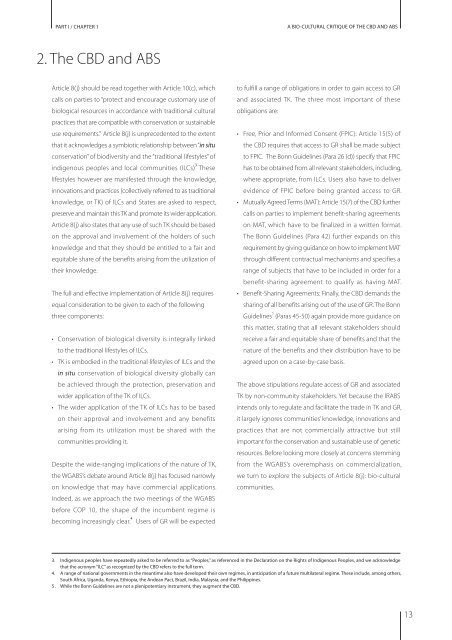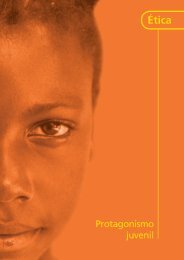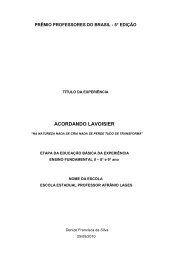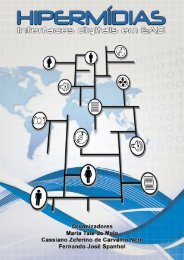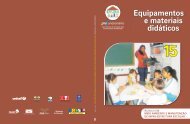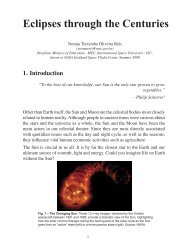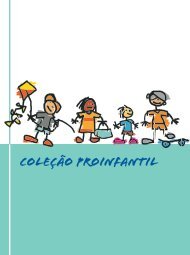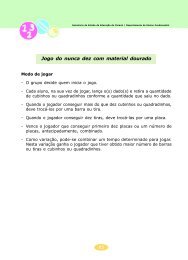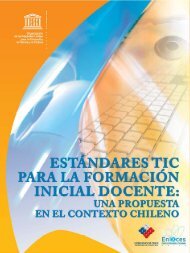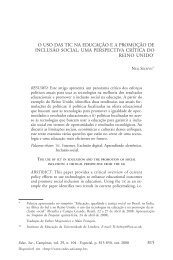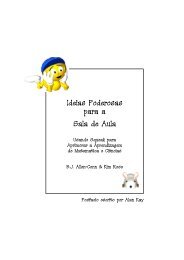BIO-CULTURAL COMMUNITY PROTOCOLS - Portal do Professor
BIO-CULTURAL COMMUNITY PROTOCOLS - Portal do Professor
BIO-CULTURAL COMMUNITY PROTOCOLS - Portal do Professor
You also want an ePaper? Increase the reach of your titles
YUMPU automatically turns print PDFs into web optimized ePapers that Google loves.
PART I / CHAPTER 1<br />
2. The CBD and ABS<br />
Article 8(j) should be read together with Article 10(c), which<br />
calls on parties to “protect and encourage customary use of<br />
biological resources in accordance with traditional cultural<br />
practices that are compatible with conservation or sustainable<br />
use requirements.” Article 8(j) is unprecedented to the extent<br />
that it acknowledges a symbiotic relationship between “in situ<br />
conservation” of biodiversity and the “traditional lifestyles” of<br />
indigenous peoples and local communities (ILCs) 3<br />
These<br />
lifestyles however are manifested through the knowledge,<br />
innovations and practices (collectively referred to as traditional<br />
knowledge, or TK) of ILCs and States are asked to respect,<br />
preserve and maintain this TK and promote its wider application.<br />
Article 8(j) also states that any use of such TK should be based<br />
on the approval and involvement of the holders of such<br />
knowledge and that they should be entitled to a fair and<br />
equitable share of the benefits arising from the utilization of<br />
their knowledge.<br />
The full and effective implementation of Article 8(j) requires<br />
equal consideration to be given to each of the following<br />
three components:<br />
• Conservation of biological diversity is integrally linked<br />
to the traditional lifestyles of ILCs.<br />
• TK is embodied in the traditional lifestyles of ILCs and the<br />
in situ conservation of biological diversity globally can<br />
be achieved through the protection, preservation and<br />
wider application of the TK of ILCs.<br />
• The wider application of the TK of ILCs has to be based<br />
on their approval and involvement and any benefits<br />
arising from its utilization must be shared with the<br />
communities providing it.<br />
Despite the wide-ranging implications of the nature of TK,<br />
the WGABS’s debate around Article 8(j) has focused narrowly<br />
on knowledge that may have commercial applications.<br />
Indeed, as we approach the two meetings of the WGABS<br />
before COP 10, the shape of the incumbent regime is<br />
becoming increasingly clear. 4<br />
Users of GR will be expected<br />
A <strong>BIO</strong>-<strong>CULTURAL</strong> CRITIQUE OF THE CBD AND ABS<br />
to fulfill a range of obligations in order to gain access to GR<br />
and associated TK. The three most important of these<br />
obligations are:<br />
• Free, Prior and Informed Consent (FPIC): Article 15(5) of<br />
the CBD requires that access to GR shall be made subject<br />
to FPIC. The Bonn Guidelines (Para 26 (d)) specify that FPIC<br />
has to be obtained from all relevant stakeholders, including,<br />
where appropriate, from ILCs. Users also have to deliver<br />
evidence of FPIC before being granted access to GR.<br />
• Mutually Agreed Terms (MAT): Article 15(7) of the CBD further<br />
calls on parties to implement benefit-sharing agreements<br />
on MAT, which have to be finalized in a written format.<br />
The Bonn Guidelines (Para 42) further expands on this<br />
requirement by giving guidance on how to implement MAT<br />
through different contractual mechanisms and specifies a<br />
range of subjects that have to be included in order for a<br />
benefit-sharing agreement to qualify as having MAT.<br />
• Benefit-Sharing Agreements: Finally, the CBD demands the<br />
sharing of all benefits arising out of the use of GR. The Bonn<br />
Guidelines 5<br />
(Paras 45-50) again provide more guidance on<br />
this matter, stating that all relevant stakeholders should<br />
receive a fair and equitable share of benefits and that the<br />
nature of the benefits and their distribution have to be<br />
agreed upon on a case-by-case basis.<br />
The above stipulations regulate access of GR and associated<br />
TK by non-community stakeholders. Yet because the IRABS<br />
intends only to regulate and facilitate the trade in TK and GR,<br />
it largely ignores communities’ knowledge, innovations and<br />
practices that are not commercially attractive but still<br />
important for the conservation and sustainable use of genetic<br />
resources. Before looking more closely at concerns stemming<br />
from the WGABS’s overemphasis on commercialization,<br />
we turn to explore the subjects of Article 8(j): bio-cultural<br />
communities.<br />
3. Indigenous peoples have repeatedly asked to be referred to as “Peoples,” as referenced in the Declaration on the Rights of Indigenous Peoples, and we acknowledge<br />
that the acronym “ILC” as recognized by the CBD refers to the full term.<br />
4. A range of national governments in the meantime also have developed their own regimes, in anticipation of a future multilateral regime. These include, among others,<br />
South Africa, Uganda, Kenya, Ethiopia, the Andean Pact, Brazil, India, Malaysia, and the Philippines.<br />
5 . While the Bonn Guidelines are not a plenipotentiary instrument, they augment the CBD.<br />
13


